Was Butch Cassidy Real?
Was Butch Cassidy real? Yes, he was. The real person behind the name was: Robert Leroy Parker.
Roy, as he was known when he was young, was born in Beaver, Utah, in April 1866. His father, Maximilian, had a small homestead property there. His parents converted to Mormonism in England and came to America in 1856. Brigham Young, the leader of the Church of Jesus Christ of Latter-day Saints (Mormons) at that time, sent many of the converts from Europe to southern Utah to settle and start new lives there.
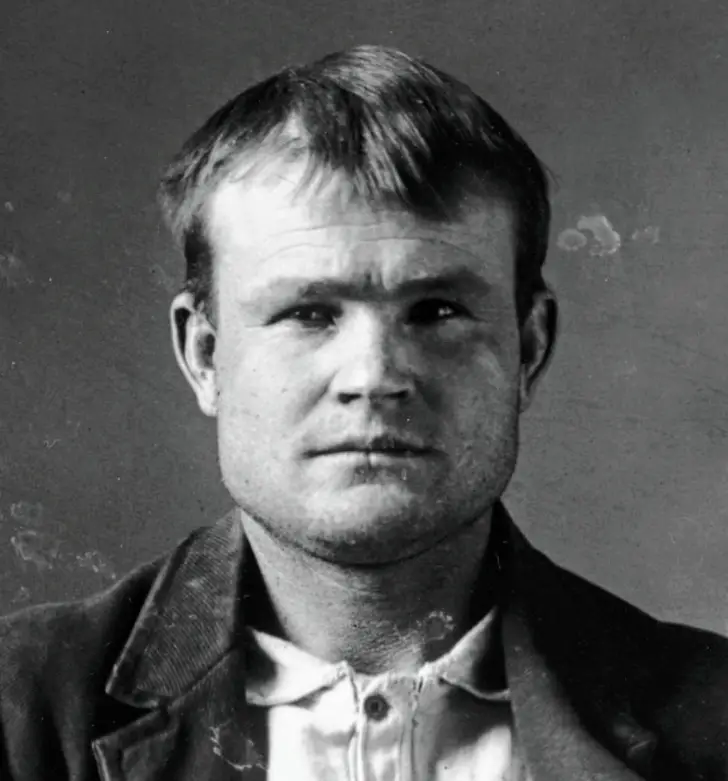
Wyoming State Prison – Dec 1893
Photo – Wikimedia Commons

Photo – Wikimedia Commons
Life wasn’t easy for young Roy. In 1879, Roy’s parents moved farther east over the mountains to the small town of Circleville. To help earn a living for himself and his family, Roy became a hired hand on ranches in western Utah.
History notes that Roy’s first encounter with the law happened around 1880. He was a young man working at Hay Springs, near what is now Milford, Utah. His wardrobe must have been…very limited. He broke into a shop and took a pair of jeans and some pie. He left a note saying he’d return later and pay for what had been taken. The shop owner pressed charges, but Roy was acquitted by a jury. (In fairness to young Roy, he thought the shop was going to be open on Sunday. It wasn’t. He’d traveled miles into town on horseback from the ranch. He “let himself in” to avoid another trip. The “jury of his peers” must have seen it similarly.)
How did Roy come to be called Butch Cassidy? A rancher by the name of Mike Cassidy lived In Circleville. Some in the area considered him “shady.” Horse thieving and cattle rustling were common at the time. Roy came to admire Mike and later started calling himself…Butch Cassidy.
In 1884, at the age of 18, Butch moved east to the Telluride, Colorado, area. Some say he went to look for work. Others say he was delivering stolen horses to buyers in the area. (Telluride, deserving of a CuriousOnlooker post of its own, was a booming mining town at the time…filled with money, characters, and…opportunity.)
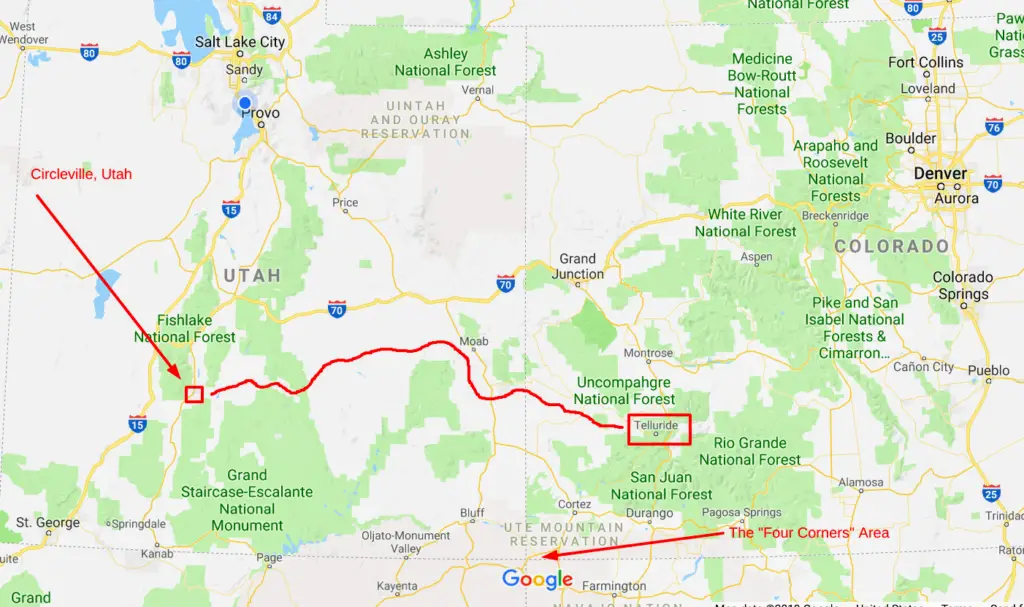
Source: Google Maps
Cassidy’s life as an outlaw began here. In June 1889, he and three other cowboys (Matt Warner and the McCarty brothers) robbed the San Miguel Valley Bank in Telluride. (That bank burned down some years after the robbery. It was replaced by the Mahr Building. That building still exists today on Colorado Avenue in Telluride.) They got away with over $20,000 dollars, a lot of money at that time. (In 2018, that would be over $585,000 dollars.)
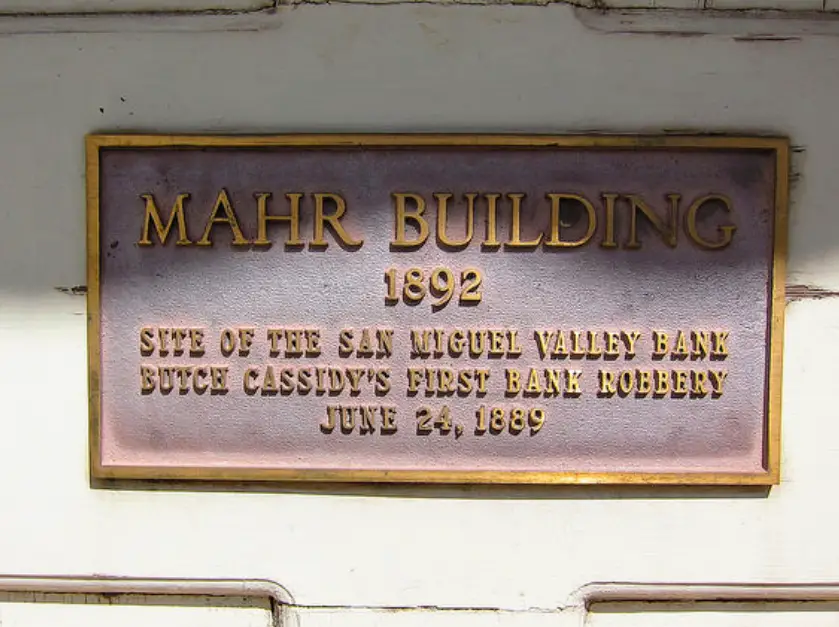
Photo – Frank Swift
In 1894, Cassidy was arrested in Lander, Wyoming, for stealing horses. He spent nearly 2 years in the Wyoming State Prison in Laramie. He was released from prison in 1896.

Photo – Wikimedia Commons
Cassidy had a lot of friends that were known criminals. These included: Harvey “Kid Curry” Logan, Ben Kilpatrick, Harry Tracy, Will “News” Carver, Laura Bullion, George “Flat Nose” Curry, and his closest friend, William Ellsworth “Elzy” Lay. After Cassidy got out of prison, this group started riding and raiding again together. They started calling themselves…the Wild Bunch.
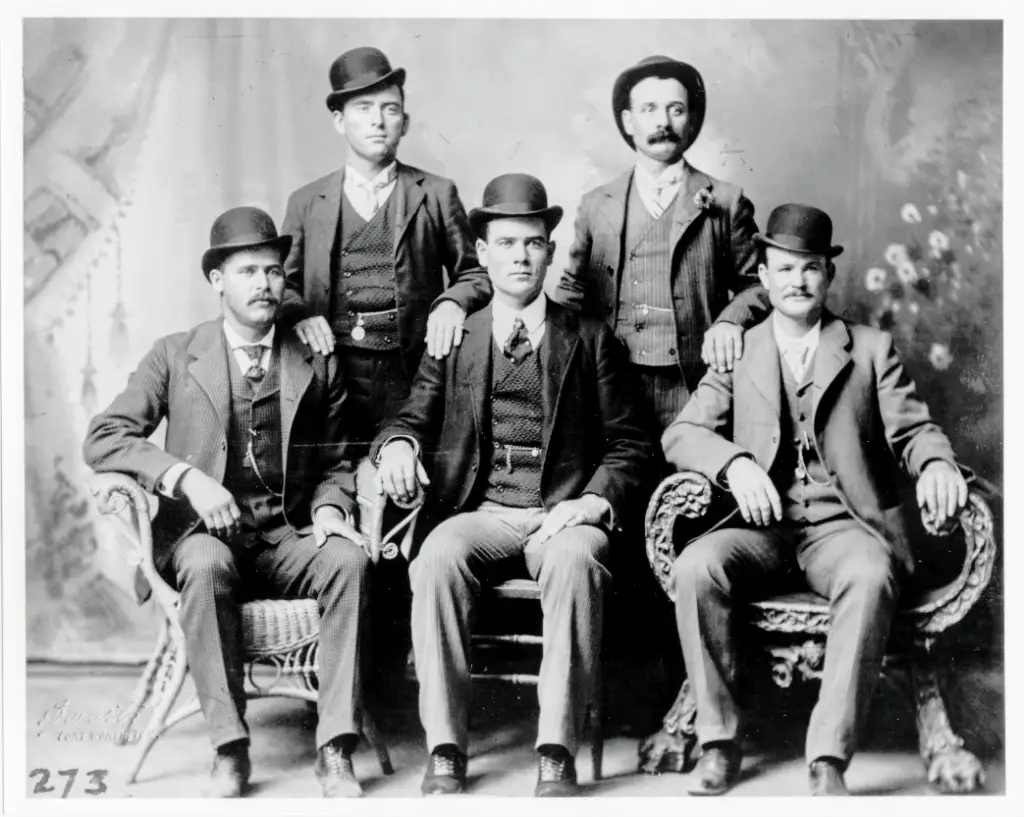
Will Carver and Harvey Logan
Harry Longabaugh, Ben Kilpatrick, Butch Cassidy
Photo – Wikimedia Commons
In the fall of 1896, the Wild Bunch robbed the bank in Montpelier, Idaho (in the southeast part of the state, not far from Logan, Utah). Before the end of that year, Cassidy recruited Harry Alonzo Longabaugh, also known as the “The Sundance Kid,” into the Wild Bunch.
The next four years were spent planning and robbing banks, trains, and mining payrolls in Utah, Wyoming, Colorado, Nevada, New Mexico, and Arizona. There were daring escapes, hard times on the Outlaw Trail, and some shootouts too. The banks, railroads, and mining companies hired detective agencies to track the outlaws down, arrest them if possible, or kill them.
The pressures of being on the run became non-stop. Wild Bunch members were hunted like animals. The group started to break up. Some were caught, others killed. Cassidy and Longabaugh went to New York City early in 1901. Together with Etta Place, Longabaugh’s female companion, they booked passage on the British steamship Herminius and made their way to Buenos Aires, Argentina. They purchased a 15,000-acre ranch near Cholila, just east of the Andes mountains.
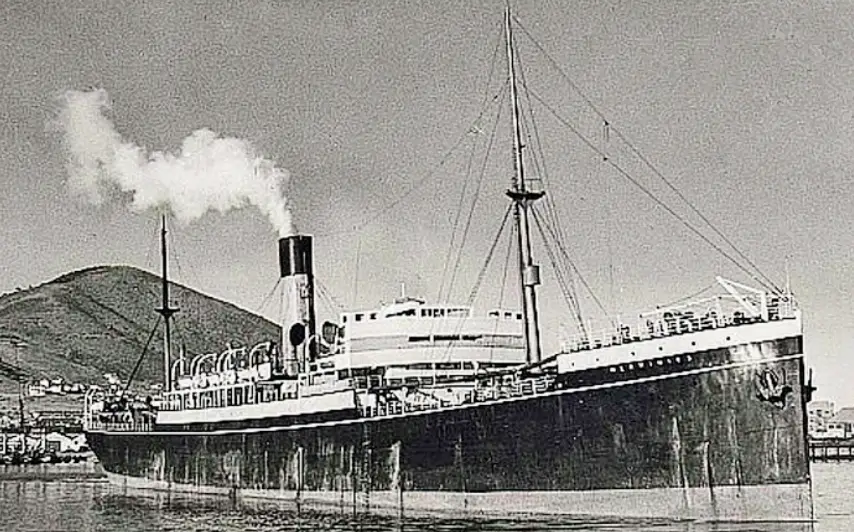
Photo – Joe McMillan Collection
The excitement of being an outlaw must have become an addiction. In 1905, Cassidy and Longabaugh started robbing banks and payrolls again in Argentina, Bolivia, and Chile. Not speaking Spanish and being part of the white minority, it must have been hard for the ‘Gringos’ to stay hidden. They went on the run again.
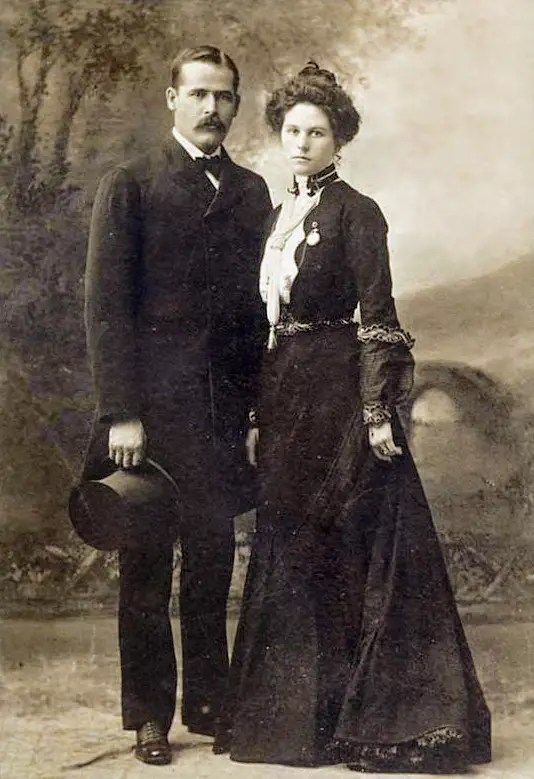
Before Sailing to Argentina – Feb 1901
Photo – Wikimedia Commons
How did Cassidy meet his end? It depends. It depends on whether you choose to believe Hollywood or Cassidy’s own family. In the 1969 film, Butch Cassidy and the Sundance Kid, it shows Cassidy and Longabaugh die in a shootout with a small regiment from the Bolivian Army. In 1991, investigation teams searched for the graves of Cassidy and Longabaugh in San Vincente, Bolivia. Human remains were found, but the DNA did not match.
On the other hand, Cassidy’s youngest sister, Josie Bassett, claimed that he visited her back in Utah in the 1920’s. She said this in an interview in 1960. At that time she added: “Butch died in Johnnie, Nevada, about 15 years ago.” (Johnnie is a little north of Pahrump, Nevada, which is a little west of Las Vegas.) Others from Cassidy’s hometown of Circleville, Utah, have also said that Cassidy worked in Nevada until his death.
Butch Cassidy was very much a real person. Whether you’re on the side of law and order or on the side of Cassidy and the Wild Bunch, there’s plenty of excitement and adventure to go around. Was he an outlaw? Definitely. Was he a depraved evil-doer that was determined for a tragic end? Maybe not. Cassidy wrote this about himself:
“The best way to hurt them [rich corporations] is through their pocket book. They will [h]oller louder than if you cut off both legs. I steal their money just to hear them holler. Then I pass it out among those who really need it.”
Was Butch Cassidy a Robin Hood or a really bad guy? The truth probably lies somewhere in between.

Frans, thanks for doing this article. I always look forward to your Curious Onlooker posts. I find reading them a fun way to end the day, and I always learn something new, even on subject matter I am quite familiar with. Keep up the good work, I really enjoy your posts.
Thanks, Mckell. Glad you like them. It’s learning for me too. Linda and I found a lot of good additional information about Parker/Cassidy on FamilySearch. Interesting, huh? Parker’s grandfather converted in England and remained active LDS until his death in St. George. His father had a falling out with another church member/neighbor in the Circleville area. The matter went before the local LDS bishop. The bishop sided with the other party and Parker’s father stayed away from the church after that. It’s perhaps too simplistic to stay that was the “turningpoint” for young Roy/Butch, but it likely had an influence.
It happened so many years ago that I had completely forgotten about it. When my dad’s employer, Kennecott Copper, was on strick on the 1960’s, my father found work building campgrounds and other recreational facilities at Flaming Gorge. After he had been working out there for a few months, on one of our visits, my dad took my mother and us kids on a hike in a place called Hideout Canyon. After hiking for some time, my dad informed us that we were nearing a cabin Butch Cassidy used when hiding from the law. After walking a short distance we saw a very old, long abandoned, one-room cabin in the middle of nowhere. Going inside, you could see holes in the roof, and open gaps on the sides. There were a few rusty old close hangers in what appears to have been a closet, but other than a few hangers, the cabin was empty. As I remember it, you would never know the cabin was there until you were almost upon it, as it was very well concealed. We spent the better part of a day hiking into it, exploring the surrounding area and hiking back to our truck. Today, I don’t think I could find it again if my life depended on it. There was no trail going to it, and unlike my father, I would be hopelessly lost if I were to adventure miles off into the wilderness. I am glad he took me to see it, and I will forever be grateful that I got to visit this little piece of Utah’s wild west history.
Wow, Mckell, thanks for sharing. Your story about visiting a cabin that Butch Cassidy used with your family is an incredible one. From what I learned, Butch Cassidy liked out-of-the-way places like what you described. He was also active (= on the run) in this part of Utah and Wyoming. The dam at Flaming Gorge was not completed until 1964. So when Butch was in the area, it was probably just rivers, creeks, canyons/draws, and sagebrush. The cabin lasted from Butch’s time until the 1960’s. Hopefully, it’s still standing now. I’m guessing there’s a few hunters that have an idea where it is. Thanks for sharing, Mckell. – Frans (TheCuriousOnlooker No. 1 – TCO01)